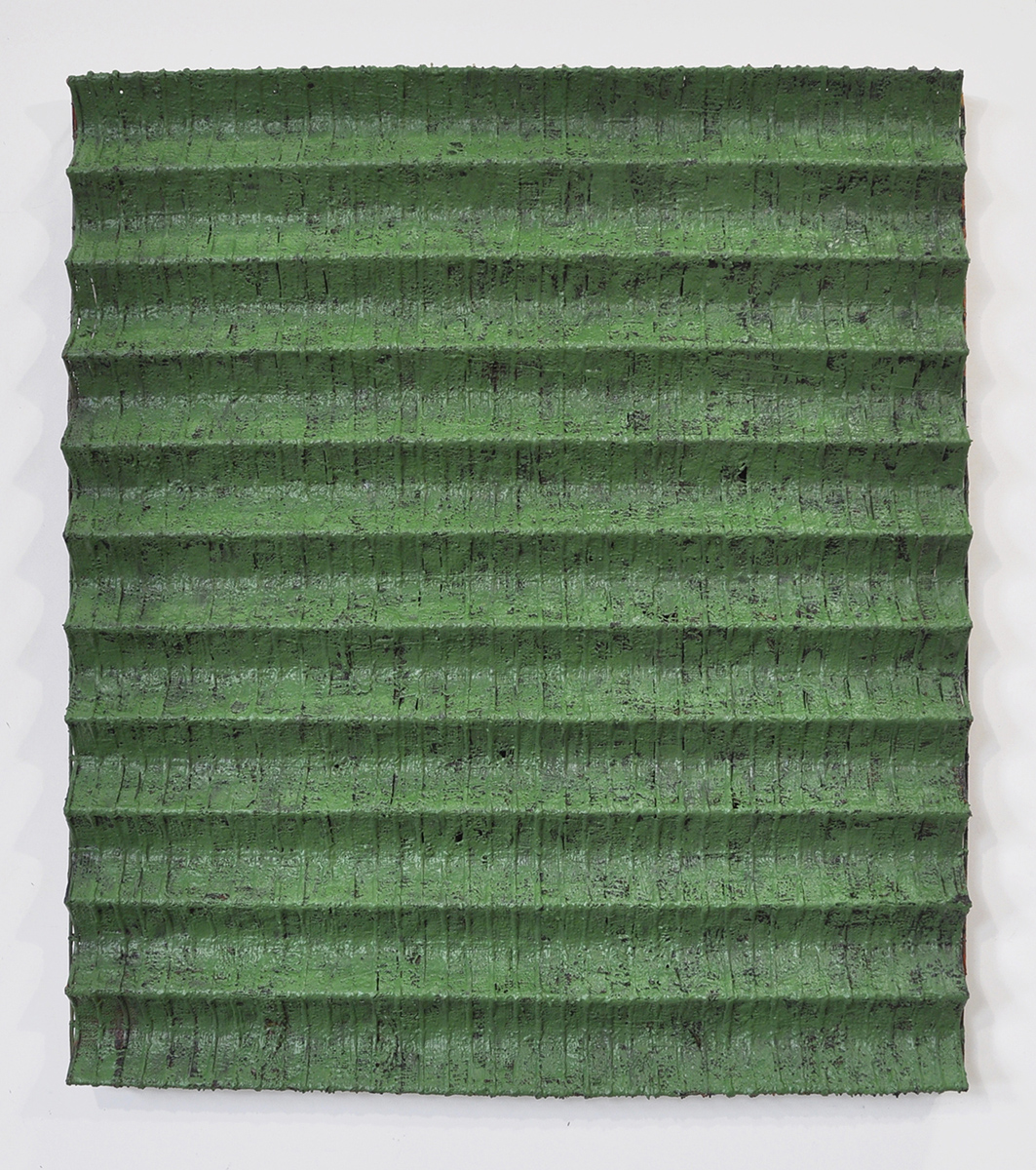Shows
Sopheap Pich’s “Elemental”


Cambodian-born Sopheap Pich is referred to as one of the biggest rising stars in the Southeast Asian art scene. After procuring an MFA at the School of the Art Institute of Chicago in 1999, Pich meteorically soared to international acclaim, exhibiting at numerous establishments of prestige around the world. Bangkok’s H Gallery first hosted him in 2007, and Pich has returned for the third time to showcase his epic minimalism in new creations shown in “Elemental.” Primarily utilizing found and repurposed materials, Pich’s textural marvels captivate in three dimensions and profess an artistic maturation in his proprietary aesthetic.
A mixed medium sculpture of sandstone, copper wire and rattan, Monument No. 3 (all works 2016) arrests observers with its monolithic quality. Embedded within a weathered, beaten slab of stone, the spiral rings of copper-bound rattan appear to have been seized mid-motion. The rings’ cylindrical arrangement relates an organic engine, still in motion as the stone overtook them. The static block of chiseled stone halts a formation of cyclic biotic materials and steers the viewer to pause and consider the effects of humanity’s monuments on our natural world.



Several sheets of repurposed burlap stretched over bamboo grids adorn the walls of the gallery. The umbral totality of Void is a suspended portal to the abyss with layers upon layers of pitch-black oil paint obscuring all materials that lie underneath. However, on closer inspection, the textures of the burlap, bamboo and twine can still be seen; in fact, the darkness found in Void amplifies their tactility. Its simulated uniformity leads the viewer to question the emptiness of space.
Light Green Channel and a deep blue untitled work follow a similar vein, with painted burlap over bamboo frames. The sea green of Channel and the cerulean of Untitled evoke a different type of abyss—the ocean. Waveforms in their bamboo frames introduce an elemental tumultuousness. Tears and punctures in the burlap disrupt the homogeneity in both creations, highlighting the mistreatment of azure, marine environments as we pollute and overfish.
With the remaining burlap pieces Pich makes no effort to hide his works’ previous lives. Faded dates written in ink, stamps, tears and mends are visible on both The Clearings 1 and the aptly titled Memory. The same black pitch that defined Void punches a hole in the center of Memory, leaving only an outer perimeter of authenticity to the burlap. True to human memory, the center of the piece is devoid of any detail, perhaps a ploy to guide the viewer to derive meaning from its margins. The Clearings 1 leaves much more of the original burlap visible by scaling down its negation to two small black squares. Bereft of the weight found in Void and Memory, The Clearings 1 feels naked and comes across as rudimentary.

A small marble sculpture, Beng No. 4, stands out among the burlap and rattan. From one of Pich’s signature burlap-covered frames, smooth marble balloons forth. Though this piece is radically different from the other artworks in the exhibition, the viewer is reminded of the artist’s eclectic choices of materials. The apparent tension between mediums infers a moment captured just before complete separation between the marble and frame. This suspended animation hints at the artist—and the world—on the cusp of a completed transformation. Escaping from a delicate cocoon, the natural yet sculpted form of the marble alludes to a transformation from a frail type of construction to something more permanent, symbiotic, and natural.
The most striking of Pich’s new works in “Elemental” is the intricate Bricks Before Palaces. Its ornate latticework of bamboo and rattan held together by wire presents different messages depending on the observer’s perspective. An amalgamation of repeating shapes that compound and divide one another, Bricks is punctured by a series of irregular circles—reminding the viewer that Pich’s practice is rooted in handicraft traditions found in Southeast Asia. And yet, the artwork’s complexities are evident in its fractal qualities and foundational nature. The light penetrating the spaces between the fibers play on the wall as the observer takes the piece in from all angles creating a striking symbol subjective to perspective.
Pich shows incredible refinement in his latest works, which are elevated to physical projections of bolder, more esoteric statements. At the same time, he retains the essence of earlier creations, surely accelerating his rising stardom to superluminal speeds.
Sopheap Pich’s “Elemental” is on view at H Gallery, Bangkok, until January 29.








